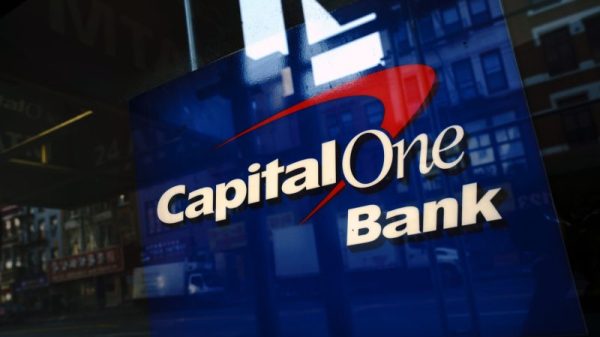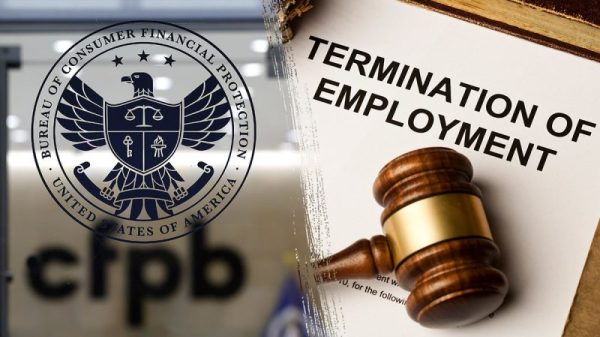It’s time for a wellness check at CVS Health.
Shares of the company are down more than 20% this year as it grapples with higher-than-expected medical costs in its insurance unit and pharmacy reimbursement pressure, among other issues.
As it seeks to claw back faith with Wall Street, the company is considering breaking itself up.
CVS has engaged advisors in a strategic review of its business, CNBC reported Monday. One option being weighed is splitting up its retail pharmacy and insurance units. It would be a stunning reversal for the company, which has spent tens of billions of dollars on acquisitions over the last two decades to turn itself into a one-stop health destination for patients.
Some analysts contend that a breakup of CVS would be challenging and unlikely.
CVS risks losing customers and revenue if it splits up its vertically integrated business segments, which includes health insurer Aetna and the major pharmacy benefits manager Caremark. That could translate to more lost profits for a health-care giant that has slashed its full-year 2024 earnings guidance for three consecutive quarters.
“There really is no perfect option for a split,” said eMarketer senior analyst Rajiv Leventhal, who believes a breakup is still a possibility. “If that does happen, one side of the split becomes really successful and prosperous, and the other would significantly struggle.”
Notably, CVS executives on Monday met with major shareholder Glenview Capital to discuss how to fix the flailing business and recover its stock, CNBC previously reported. But Glenview on Tuesday denied rumors that it is pushing to break up the company.
If CVS stays intact, CEO Karen Lynch and the rest of the management team will have to execute major changes to address what industry experts say are glaring issues battering its bottom line and stock price.
The company has already undertaken a $2 billion cost-cutting plan, announced in August, to help shore up profits. CVS on Monday said that plan involves laying off nearly 3,000 employees.
Some analysts said the health-care giant must prioritize recovering the margins in its insurance business, which they believe is the main issue weighing on its stock price and financial guidance for the year. That pressure drove a leadership change earlier this year, with Lynch assuming direct oversight of the company’s insurance unit in August, displacing then-President Brian Kane.
CVS’ management team and board of directors “are continually exploring ways to create shareholder value,” a company spokesperson told CNBC, declining to comment on the rumors of a breakup.
“We remain focused on driving performance and delivering high quality healthcare products and services enabled by our unmatched scale and integrated model,” the spokesperson said in a statement.
Investors may get more clarity on the path forward for the company during its upcoming earnings call in November.
Some analysts said the likelihood of CVS separating its retail pharmacy and insurance segments is low given the synergies between the three combined businesses. Separating them could come with risks, they added.
“The strategy itself is still vertical integration,” Jefferies analyst Brian Tanquilut told CNBC. “The execution might not have been the greatest, but I think it’s a little too early to really conclude that it’s a broken strategy.”
Many of CVS’ clients contract with the company across its three business units, according to Elizabeth Anderson, analyst at Evercore ISI. Anderson said “carving out and pulling apart a whole contract” in the event of a breakup might be “quite difficult operationally” and lead to lost customers and revenue.
Pharmacy benefits managers like CVS’ Caremark sit at the center of the drug supply chain in the U.S., negotiating drug rebates with manufacturers on behalf of insurers, creating lists of preferred medications covered by health plans and reimbursing pharmacies for prescriptions.
That means Caremark also sits at the intersection of CVS’ retail pharmacy operation and its Aetna insurer, boosting the competitive advantage of both of the businesses. In the event of a breakup, it’s not clear where Caremark would fall.
Separating Caremark from Aetna would put the insurance business at a competitive disadvantage since all of its largest rivals, including UnitedHealth Group, Cigna and Humana, also have their own PBMs, said eMarketer’s Leventhal.
But Caremark, in some cases, also funnels drug prescriptions to CVS retail pharmacies, he said. That has helped the company’s drugstores gain meaningful prescription market share over its chief rival, Walgreens, which has been struggling to operate as a largely stand-alone pharmacy business.
CVS is the top U.S. pharmacy in terms of prescription drug revenue, holding more than 25% of the market share in 2023, according to Statista data released in March. Walgreens trailed behind with nearly 15% of that share last year.
Now, CVS drugstores must maintain an edge over competitors at a time when the broader retail pharmacy industry faces profitability issues, largely due to falling reimbursement rates for prescription drugs. Increased competition from Amazon and other retailers, inflation, and softer consumer spending are making it more difficult to turn a profit at the front of the store. Meanwhile, burnout among pharmacy staff is also putting pressure on the industry.
CVS’ operating margin for its pharmacy and consumer wellness business was 4.6% last year, up from 3.3% in 2022 but down from 8.5% in 2019 and 9.9% in 2015.
CVS and Walgreens have both pivoted from years of endless retail drugstore store expansions to shuttering hundreds of locations across the U.S. CVS is wrapping up a three-year plan to close 900 of its stores, with 851 locations shuttered as of August.
The rocky outlook for retail pharmacies could make it difficult for CVS to find a buyer for its drugstores in the event of a split, according to Tanquilut. He said a spinoff of CVS’ retail pharmacies would be more likely.
“There’s a reason they’re cutting down stores. Why break it up when the relationship between Caremark and CVS retail is what keeps it outperforming the rest of the pharmacy peer group?” Tanquilut said.
CVS has other assets that would need to be distributed in the event of a breakup.
That includes two recent acquisitions: fast-growing primary care clinic operator Oak Street Health, which the company purchased for $10.6 billion last year, and Signify Health, an in-home health-care company that CVS bought for about $8 billion in 2022. Those deals aimed to build on CVS’ major push into health care — a strategy that Walgreens and other retailers have also pursued over the last few years.
Oak Street Health could theoretically be spun out with Aetna in the case of a split, Mizuho managing director Ann Hynes wrote in a research note Tuesday.
The primary care clinic operator complements Aetna’s Medicare business because it takes care of older adults, offering routine health screenings and diagnoses, among other services. CVS also sells Aetna health plans that offer discounts when patients use the company’s medical care providers.
But CVS has also started to integrate Oak Street Health with its retail pharmacies. The company has opened those primary care clinics side by side with some drugstore locations in Texas and Illinois, with plans to introduce around two dozen more in the U.S. by the end of the year.
Several companies, including Amazon, Walmart, CVS and Walgreens, are feeling the pain from bets on primary care. That’s because building clinics requires a lot of capital, and the locations typically lose money for several years before becoming profitable, according to Tanquilut.
Walgreens could potentially exit that market altogether. The company said in a securities filing in August it is considering a sale of its primary care provider VillageMD.
But Tanquilut said it may not make sense for CVS to sell Oak Street Health or Signify Health because “they’re actually hitting their numbers.”
Signify saw 27% year-over-year revenue growth in the second quarter, while Oak Street sales grew roughly 32% compared with the same period last year, reflecting strong patient membership, CVS executives said in an earnings call in August.
Oak Street ended the quarter with 207 centers, an increase of 30 from last year, executives added.
“Why get rid of them when they’re still strategic in nature?” Tanquilut told CNBC, adding that it would be difficult to find a buyer for Oak Street given the challenging market for primary care centers.
If CVS doesn’t undergo a breakup, the “single best value-creating opportunity” for the company is addressing the ongoing issues on the insurance side of the business, according to Leerink Partners analyst Michael Cherny.
He said the segment’s performance has fallen short of expectations this year due to higher-than-expected medical costs — by far the biggest hit to the company’s financial 2024 guidance and stock performance, he said. Cherny said he is confident the issue is “fixable,” but it will depend on whether CVS can execute the steps it has already outlined to improve margins in its insurance unit next year.
Aetna includes plans for the Affordable Care Act, Medicare Advantage and Medicaid, as well as dental and vision. Medical costs from Medicare Advantage patients have jumped over the last year for insurers as more seniors return to hospitals to undergo procedures they had delayed during the Covid-19 pandemic, such as hip and joint replacements.
Medicare Advantage, a privately run health insurance plan contracted by Medicare, has long been a key source of growth and profits for the broader insurance industry. More than half of Medicare beneficiaries are enrolled in those plans as of 2024, enticed by lower monthly premiums and extra benefits not covered by traditional Medicare, according to health policy research organization KFF.
But investors are now concerned about the skyrocketing costs from Medicare Advantage plans, which insurers warn may not come down anytime soon.
Cherny said CVS faced a “double whammy” in Medicare Advantage this year, grappling with excess membership growth at a time when many seniors are using more benefits.
In August, CVS also said its lowered full-year outlook reflected a decline in the company’s Medicare Advantage star ratings for the 2024 payment year.
Those crucial ratings help patients compare the quality of Medicare health and drug plans and determine how much an insurer receives in bonus payments from the Centers for Medicare & Medicaid Services. Plans that receive four stars or above get a 5% bonus for the following year and have their benchmark increased, giving them a competitive advantage in their markets.
Last year, CVS projected it would lose up to $1 billion in 2024 due to lower star ratings, the company disclosed in a securities filing.
But things may start to look up in 2025.
For example, one of the company’s large Medicare Advantage contracts regained its four-star rating, which will “create an incremental tailwind” in 2025, CVS executives said in August.
“We’re giving them the benefit of the doubt because we know that the stars rating bonus payments will come back in 2025,” Tanquilut said.
During a conference In May, CVS said it would pursue a “margin over membership” strategy: CVS CFO Tom Cowhey said the company is prepared to lose up to 10% of its existing Medicare members next year in an effort to get its margins “back on track.”
The company will make significant changes to its Medicare Advantage plans for 2025, such as increasing copays and premiums and cutting back certain health benefits. That will eliminate the expenses tied to those benefits and drive away patients who need or want to use them.
Those actions will help the company achieve its target of 100- to 200-basis-points margin improvement in its Medicare Advantage business, CVS executives said in August.







































